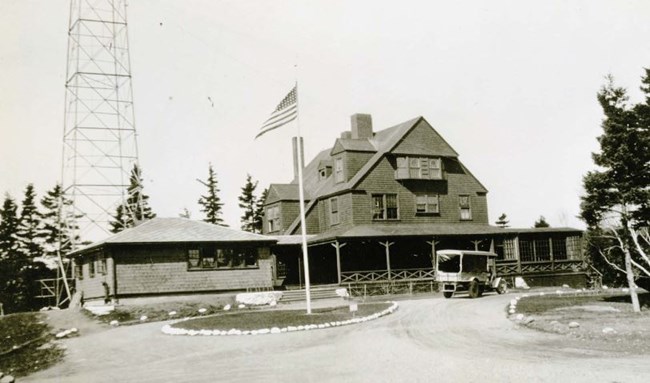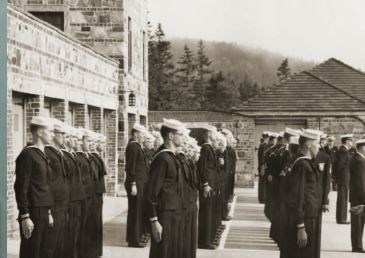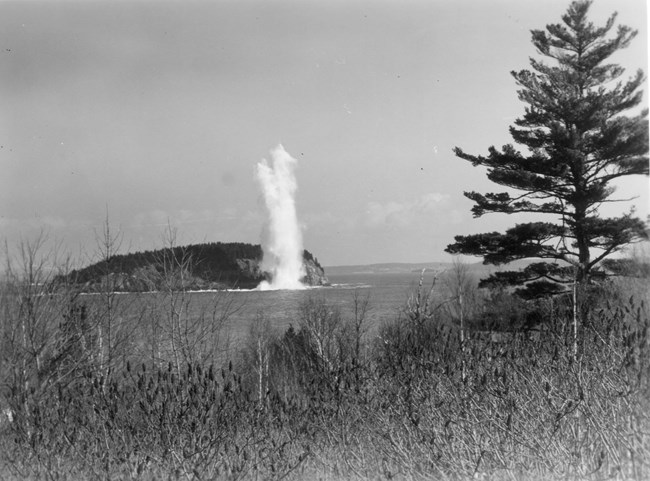|
Military history is human history. It reflects the movement of people, economies, and political forces. This is equally as true in the place we now call Acadia National Park. Early Colonization and the American Revolutionary WarMilitary forces aligned with economic drivers to lead the colonization of coastal Maine and attempts to eradicate native people from their homelands. In the 1600s and 1700s, various attempts were made by European militaries to establish forts and outposts in the homelands of native peoples who had been living here since time immemorial. Early American naval attempts to conquer and kill Wabanaki people were equally as consistent. Confronting the complex challenges of survival in their invaded homelands, the Wabanaki confederacy was formed in the late 17th century to defend their ancestral homelands against English aggression. The Wabanaki confederacy gave its support to the American Revolution and played a pivotal role in the success of the revolution in coastal Maine. The U.S. Navy and U.S. Coast GuardIn this maritime environment, both the United States Life Saving Service (now the U.S. Coast Guard) and the United States Navy (U.S. Navy) have been a presence in and around Acadia National Park for generations. 
U.S. Naval Radio Station at Otter CliffsAt the beginning of the twentieth century the U.S. Navy was responsible for the development of the government radio communications systems. The Navy set up a chain of radio stations along the Atlantic and Pacific coasts and by 1908 had established a system of communication capable of relaying between the two coasts. With the onset of World War I the government became interested in developing more secure overseas communication and due to the location of Mount Desert Island and its proximity to Europe, a U.S. Naval Radio Station was established at Otter Cliffs. 
U.S. Naval Radio Station, Winter Harbor, MaineIn the 1930s, when plans for Acadia National Park's Park Loop Road were expanded to include Otter Cliffs, John D. Rockefeller, Jr. successfully lobbied and funded the relocation of the Otter Cliffs radio station to the Schoodic Peninsula. The construction of the original complex of structures began in the fall of 1933, and the five original buildings were evidently completed by December 1934. Other than the radio towers, the primary buildings on the site were designed by noted architect Grosvenor Atterbury’s firm and included the Apartment Building, Power House, Pump House, Intercept Building, and Radio Compass Station. Seawall Naval Radio StationIn 1930, park founder George B. Dorr acquired 233-acres in the Seawall area that included the site of U.S.Naval Radio Station. Dorr thought this area was well suited for campground and the now-historic Seawall Campground was constructed in 1937. With the onset of WWII, in 1941, the Civilian Conservaiton Corps constructed a radio station at Seawall. The radio station was later dismantled.
U.S. Navy During World War II in Frenchman BayIn October of 1944, the U.S. Navy tested twelve torpedoes by shooting them underwater at Bald Porcupine Island. When the 11th ordinance didn't explode on impact they waited 45 seconds, and then fired the 12th. In 1996 the US Army Corps of Engineers surveyed Bald Porcupine Island and found only remnants.Cadillac Mountain Radio StationCadillac Mountain was selected as a radar station site by the US Army Corps of Engineers in 1941 and was run by the US Army Air Corps during World War II. During the time that the station was active, the top of Cadillac Mountain was closed for security reasons; it reopened in October of 1945. The first radar station stood on exposed ledge on the mountain’s middle peak and was surrounded by a chain link fence, 300 feet square and encompassing two acres. The station was moved to a new site, probably in 1944. The new site was half as large (one acre compared to two), and was rectangular in shape, with sides 145 feet by 295 feet.
Loading results...
Tags:
military military history coast guard united states coast guard navy united states navy u.s. navy u.s. army u.s. marines united states marine corps united states army soldier sailor revolutionary war american revolutionary war world war i world war ii cold war british navy french navy spanish navy dutch navy
|
Last updated: November 1, 2023
